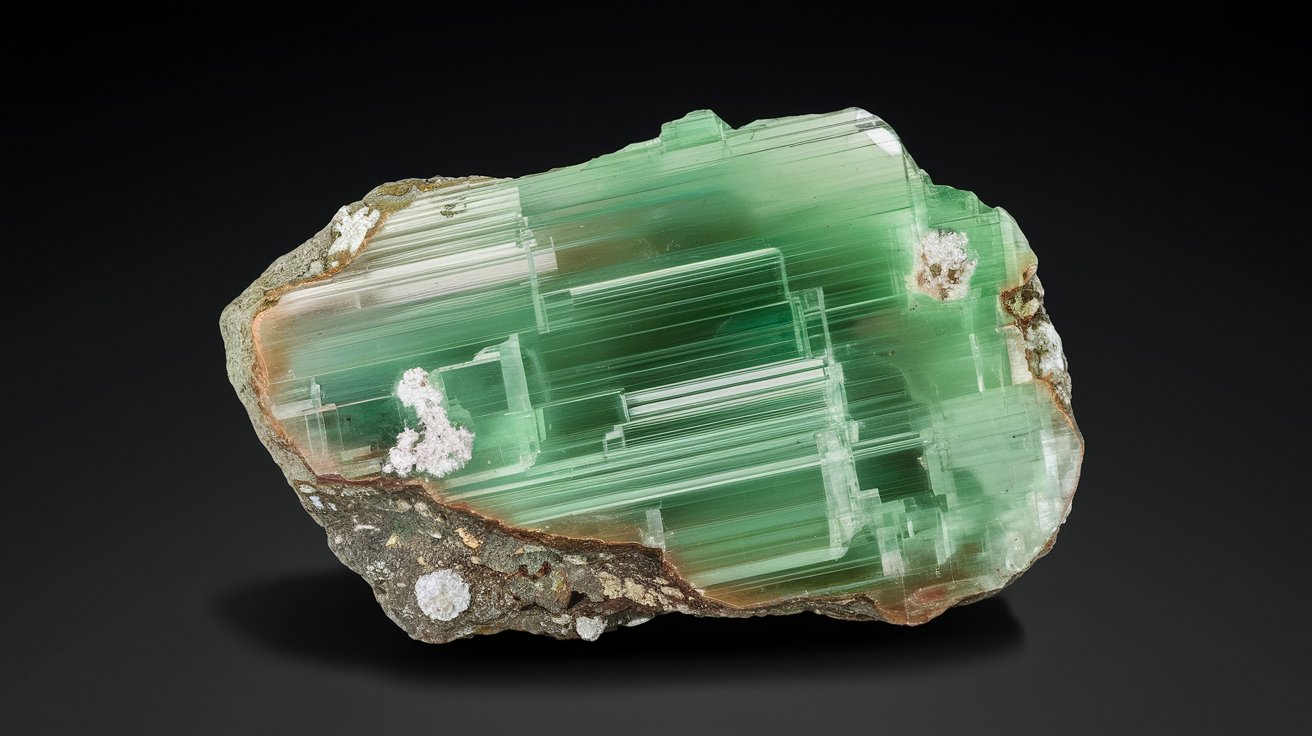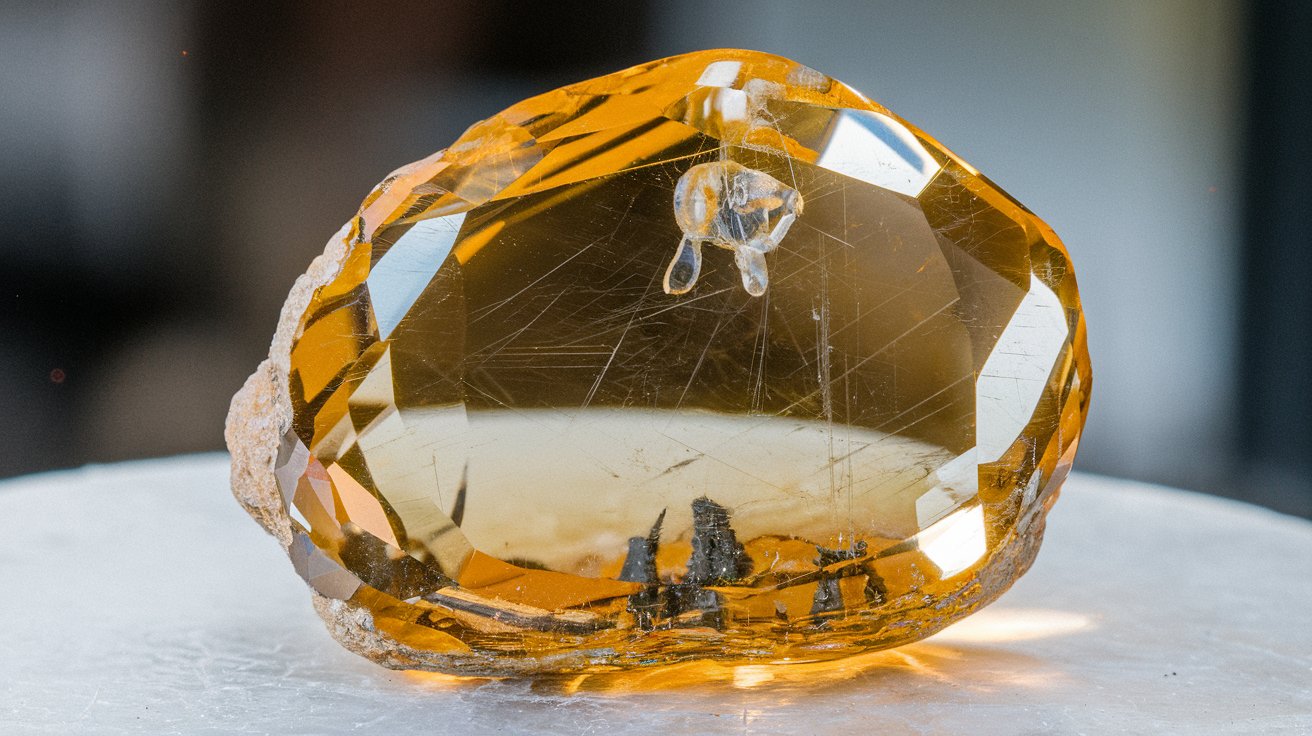
Have you ever heard of Alsakharovite-Zn? This extremely rare mineral belongs to the cyclosilicates class and boasts a unique chemical composition. With a formula of NaSrKZn(Ti, Nb)4(Si4O12)2(O, OH)4·7H2O, it contains elements like sodium, strontium, potassium, zinc, titanium, niobium, silicon, oxygen, and hydrogen. Discovered by Russian mineralogist Rastsvetaeva in 2003, Alsakharovite-Zn crystallizes in the monoclinic system and typically forms flattened prismatic crystals. Its vitreous lustre, pleochroism, and birefringence make it a captivating subject for optical studies. Found primarily in alkaline igneous rocks, this mineral's rarity and specific formation conditions make it a gem for geologists and mineralogists. Let's dive into 30 intriguing facts about this rare mineral!
Key Takeaways:
- Alsakharovite-Zn is a rare mineral with a complex chemical formula, making it one of the rarest minerals known. Its unique properties and formation process make it a subject of great interest in the scientific community.
- Despite its rarity, Alsakharovite-Zn has potential applications in fields like medicine and biotechnology. Its minimal environmental impact and ongoing scientific research make it an excellent educational tool and a subject of scientific interest.
What is Alsakharovite-Zn?
Alsakharovite-Zn is a rare mineral that has intrigued scientists and mineral enthusiasts alike. Its unique properties and composition make it a subject of great interest. Let's dive into some fascinating facts about this mineral.
-
Chemical Formula: Alsakharovite-Zn has the chemical formula NaSrKZn(Ti, Nb)4(Si4O12)2(O, OH)4·7H2O. This complex formula shows it contains elements like sodium, strontium, potassium, zinc, titanium, niobium, silicon, oxygen, and hydrogen.
-
Crystal System: It crystallizes in the monoclinic crystal system, meaning it has a single axis that isn't perpendicular to the other two axes.
-
Color: The mineral can be white, light brown, or colorless, depending on impurities and formation conditions.
-
Lustre: Alsakharovite-Zn has a vitreous lustre, giving it a glass-like appearance.
-
Hardness: With a hardness of 5 on the Mohs scale, it is relatively soft and can be scratched by a copper penny.
-
Specific Gravity: Its specific gravity is 2.9, making it slightly denser than water.
-
Cleavage: This mineral does not exhibit cleavage, meaning it doesn't break along flat surfaces easily.
-
Crystal Habit: Typically, it forms flattened prismatic crystals elongated along the [010] direction, reaching up to 8 mm in size.
Where is Alsakharovite-Zn Found?
Finding Alsakharovite-Zn in nature is a challenge due to its rarity. Its occurrence is limited to specific geological settings.
-
Occurrence: Alsakharovite-Zn is extremely rare and primarily found in alkaline igneous rocks.
-
Type Locality: The exact type locality isn't well-documented, but it occurs in regions with alkaline geological formations.
-
Geological Setting: Associated with alkaline igneous rocks, rich in alkali metals like sodium and potassium, often formed in areas with significant volcanic activity.
-
Formation Process: It forms through complex geochemical processes involving the interaction of alkaline magmas with surrounding rocks.
-
Rarity: Due to its specific formation conditions, Alsakharovite-Zn is one of the rarest minerals known.
Discovery and Naming
The discovery and naming of Alsakharovite-Zn add to its fascinating story.
-
Discovery: Russian mineralogist Rastsvetaeva discovered Alsakharovite-Zn in 2003, contributing significantly to our understanding of its properties.
-
Name Origin: Named after the Russian mineralogist who first described it, with the suffix "-Zn" indicating the presence of zinc.
Composition and Properties
The unique composition of Alsakharovite-Zn gives it distinct properties.
-
Composition: Includes sodium, strontium, potassium, zinc, titanium, niobium, silicon, oxygen, and hydrogen.
-
Hydration: Contains water molecules in its structure, indicated by 7H2O in its chemical formula, crucial for its stability.
-
Stability: Influenced by its hydration state, with water molecules helping maintain its crystal structure but making it susceptible to weathering.
-
Reactivity: Can react with acids and other substances, leading to changes in its composition and structure.
-
Acid Resistance: Shows moderate resistance to acids, though prolonged exposure can cause it to dissolve or change chemically.
-
Thermal Stability: Begins to decompose at moderate temperatures, making high-temperature studies challenging.
Optical and Catalytic Properties
Alsakharovite-Zn's optical and catalytic properties make it a subject of interest in various fields.
-
Optical Properties: Its vitreous lustre and ability to exhibit different colors depending on impurities make it useful for optical studies.
-
Pleochroism: Displays different colors when viewed from different angles, an important diagnostic feature.
-
Birefringence: Shows different refractive indices for different polarization directions, useful in determining its crystal structure.
-
Catalytic Properties: Studied for potential catalytic properties due to the presence of transition metals like titanium and niobium.
Potential Applications and Environmental Impact
Despite its rarity, Alsakharovite-Zn has potential applications and minimal environmental impact.
-
Biological Importance: Could have potential biological applications in fields like medicine or biotechnology, though more research is needed.
-
Environmental Impact: Minimal due to its rarity and limited occurrence, but any mining or extraction activities need careful management.
Educational and Scientific Value
Alsakharovite-Zn serves as an excellent educational tool and continues to be a subject of scientific research.
-
Educational Value: An excellent teaching tool in mineralogy and geology classes due to its rarity and unique properties.
-
Scientific Research: Ongoing research focuses on understanding its formation mechanisms, stability, and reactivity, contributing to broader mineralogy and geochemistry knowledge.
-
Conservation Efforts: Necessary to protect known occurrences, including preserving geological sites and ensuring responsible sampling and research.
Final Thoughts on Alsakharovite-Zn
Alsakharovite-Zn is a rare gem in the world of minerals. Its complex chemical formula and unique properties make it a fascinating subject for study. Found primarily in alkaline igneous rocks, this mineral's monoclinic crystal system and vitreous lustre set it apart. With a hardness of 5 on the Mohs scale and a specific gravity of 2.9, it's relatively soft and slightly denser than water. The absence of cleavage and its pleochroism add to its intrigue. Discovered by Rastsvetaeva in 2003, its name honors the Russian mineralogist. Though rare, Alsakharovite-Zn holds potential for scientific research and educational value. Its catalytic properties and possible biological applications make it a mineral worth preserving. Understanding Alsakharovite-Zn not only enriches our knowledge of mineralogy but also opens doors to new possibilities in various fields.
Frequently Asked Questions
Was this page helpful?
Our commitment to delivering trustworthy and engaging content is at the heart of what we do. Each fact on our site is contributed by real users like you, bringing a wealth of diverse insights and information. To ensure the highest standards of accuracy and reliability, our dedicated editors meticulously review each submission. This process guarantees that the facts we share are not only fascinating but also credible. Trust in our commitment to quality and authenticity as you explore and learn with us.


